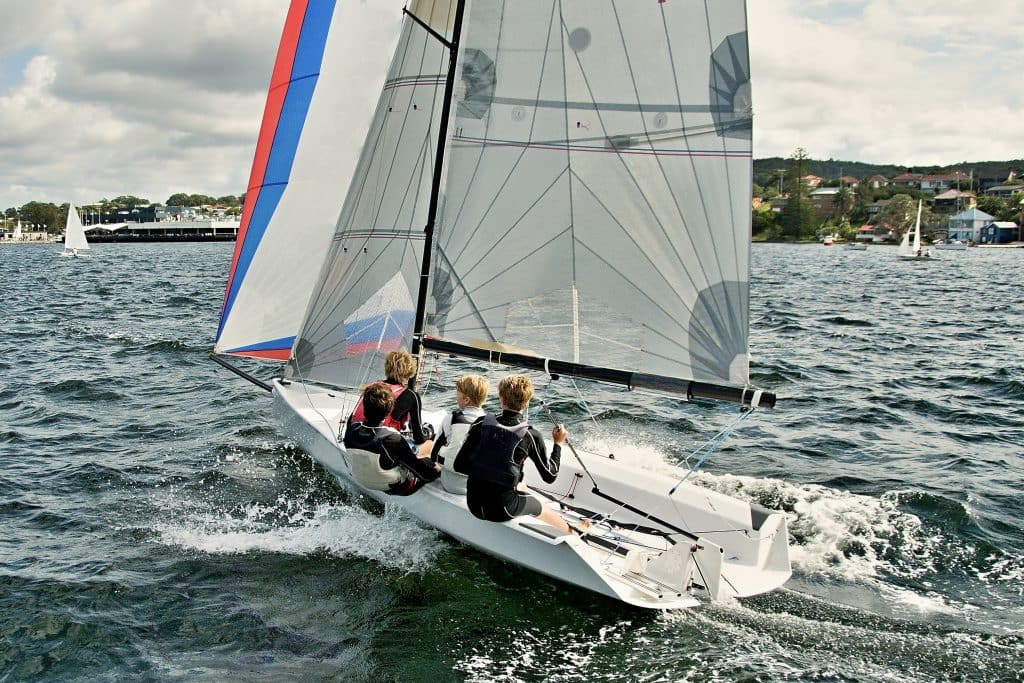Operating in four key areas – naval, commercial, leisure and offshore energy – the marine industry is a vital part of the global economy. Understandably, safety is a crucial element in sustaining marine operations, whether you are providing food, energy, transport, defense or pleasure. Webbing has any number of applications in marine safety and maintenance, with a variety of fabric choices – including polyester, nylon, polypropylene and Dyneema® webbing – depending on the demands of each particular job. Here we will take you through the myriad of uses and benefits of webbing in the marine industry. But first, a question…
Webbing or Rope?
Webbing and webbing assemblies have replaced rope and other fabric ties in a number of situations on boats and other marine vessels, and here’s why:
- Webbing winds better so it takes up less space on a boat
- Fewer furler jams – webbing is wide and flat and doesn’t get trapped under looser turns like rope can
- Webbing is stronger than rope, particularly when stretched over edges
- Rope can generate a lot of internal friction when being run through sharp bends in boating fixtures, whereas webbing has a lower friction coefficient
- Webbing stretches less than rope, which depending on the application, may be a benefit
- Webbing helps spread the load thanks to the weaving pattern in the fabric
Of course, marine webbing straps cannot replace all rope and strapping on a vessel – the important thing is to find the best product for each task.
What Are the Different Uses of Webbing in the Marine Sector?
With not only different types of material used for outdoor webbing but also the different processes and finishes that can be applied, there are many applications within the marine sector, for the manufacture of:
- Harness assemblies
- Life jackets
- Buoyancy aids
- Floatation devices
- Toe-straps and hand-holds
- Jackstays
- Sail ties
- Tie-down applications
- Marine covers
For all of these uses, but most notably for life jackets, achieving the highest level of safety and strength is vital. At Bowmer Bond, we have a range of webbings certified by an independent test laboratory to the EN ISO 12402-7 standard for Life Jackets.
With all these diverse uses combined with the safety imperative onboard ships and boats, the ability to identify the correct product and use it properly is essential. Which is why colour-coding and/or instructional and safety messaging on webbing can be very useful. Messaging can be applied to narrow fabrics using techniques like the sublimation transfer process and Jacquard weaving. Jacquard webbing has the advantage that it will not fade with time, and that the messaging stitched into the webbing will remain visible for the lifetime of the product.
Which Fabrics Are Used in Marine Webbing and Why?
Polyester
Polyester is a very versatile fabric with great properties for marine webbing applications, such as:
- Excellent strength – ideal for medium-to-high load applications
- High UV resistance
- Good abrasion resistance
- Water repellent (important for marine applications)
- Chemical resistance
- Low temperature resistance very good down to -100°C
- Low combustibility
- Excellent colour retention (for safety and instructional messaging)
- Floats in water
- Less stretch than Nylon under load
Polypropylene
While not as strong or abrasion-resistant as nylon or polyester, Polypropylene webbing has many advantages for use on the water:
- Water resistance
- Stretch resistance
- Shrink resistance
- Mildew resistance
- Does not conduct electricity
- Easy to clean
- Floats
- Low water absorption rate
- Dries quickly
- Light
- Cost-effective
- Wide range of colour options
Nylon
Nylon is also highly versatile and is commonly used for outdoor webbing. Its features and benefits include:
- Excellent strength – ideal for medium-to-high load applications
- Flame retardant
- UV resistance
- Chemical resistance (to dilute acids and common alkalis)
- High and low-temperature resistance
- Good abrasion resistance (ideal for applications where mechanical stress may occur)
Dyneema
Dyneema® is a branded technical webbing, with fibres 15 times stronger than steel, while still remaining soft and pliable. It’s impressive features include:
- Very strong
- Low stretch
- Excellent tear and abrasion resistance
- Flexible
- High UV resistance
- Low water absorption
- Floats in water
Marine Webbing from Bowmer Bond
Whether you require webbing on reels, cut lengths or webbing assemblies, Bowmer Bond will have a solution for your marine application. If you need bespoke solutions, you can contact the Bowmer Bond Sales Team via any of the contact forms on our website, or give us a call to discuss your specific requirements.
Posted 19th October 2022 by Bowmer Bond



